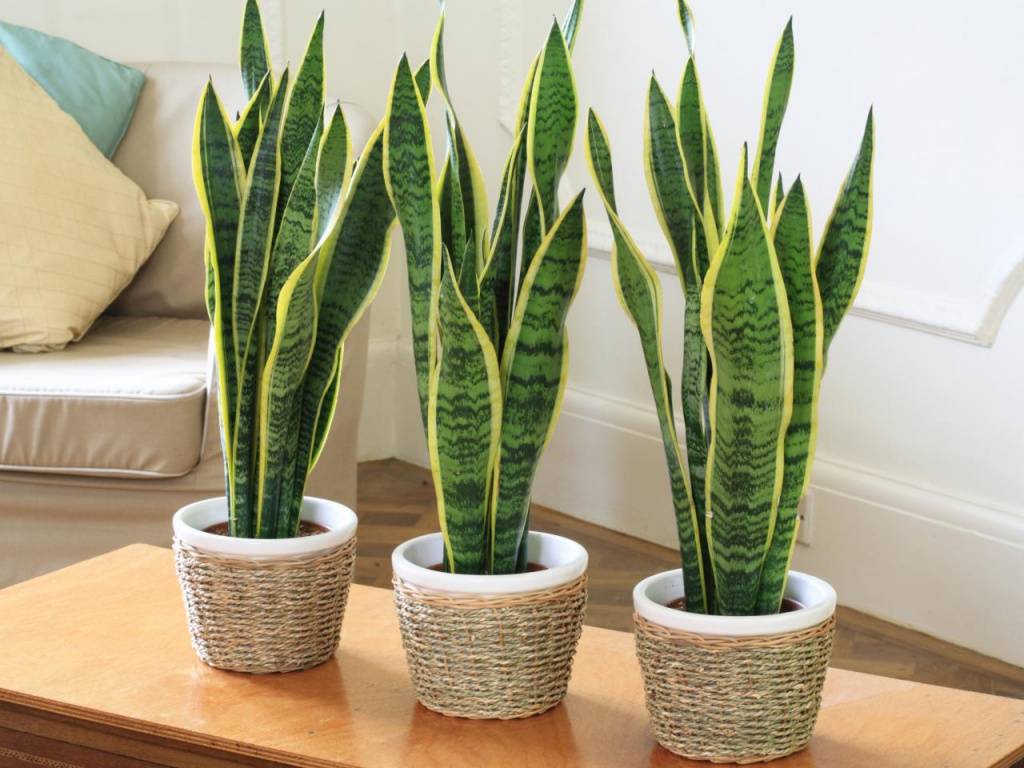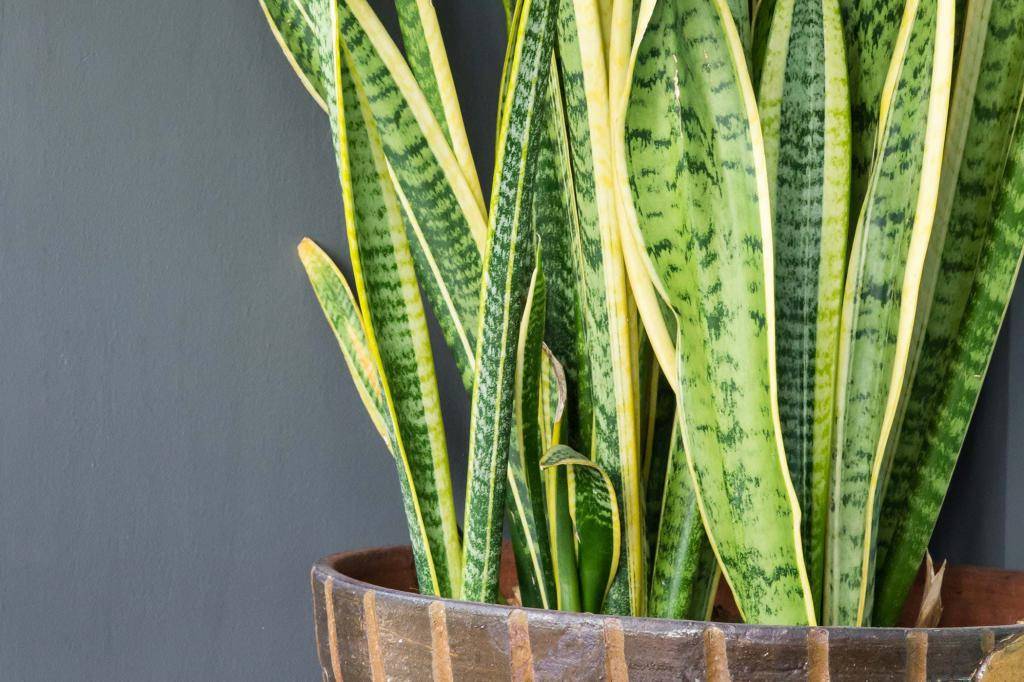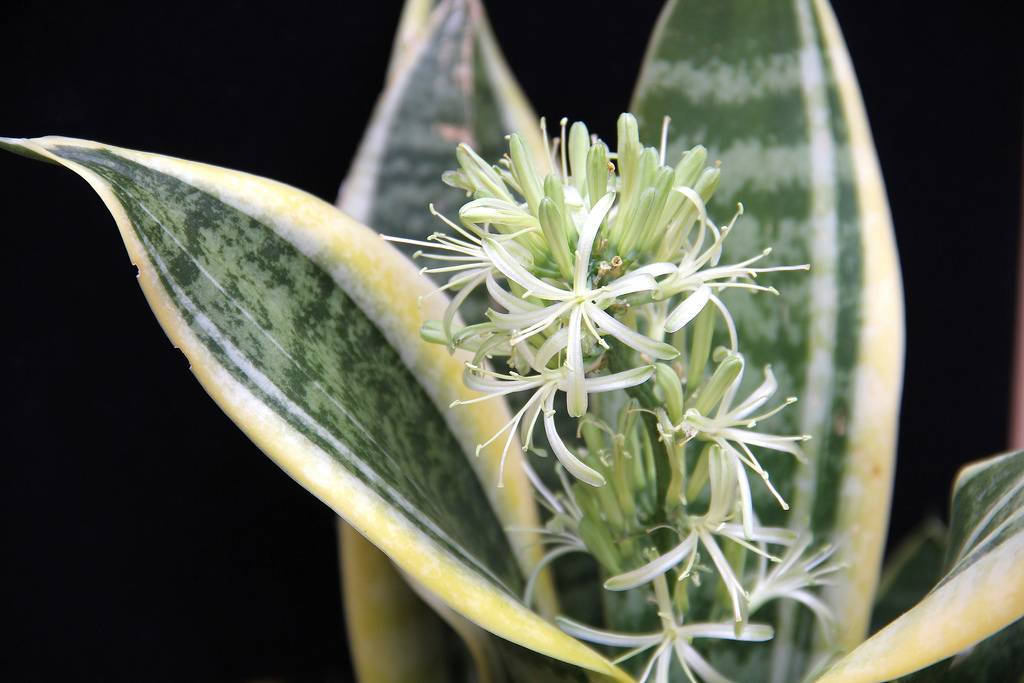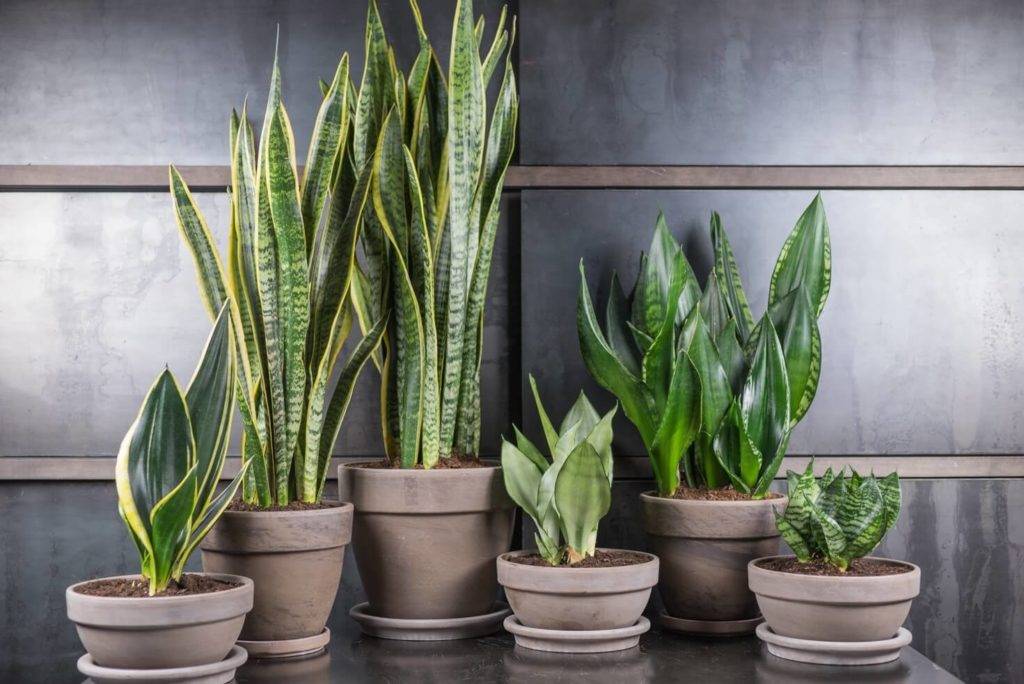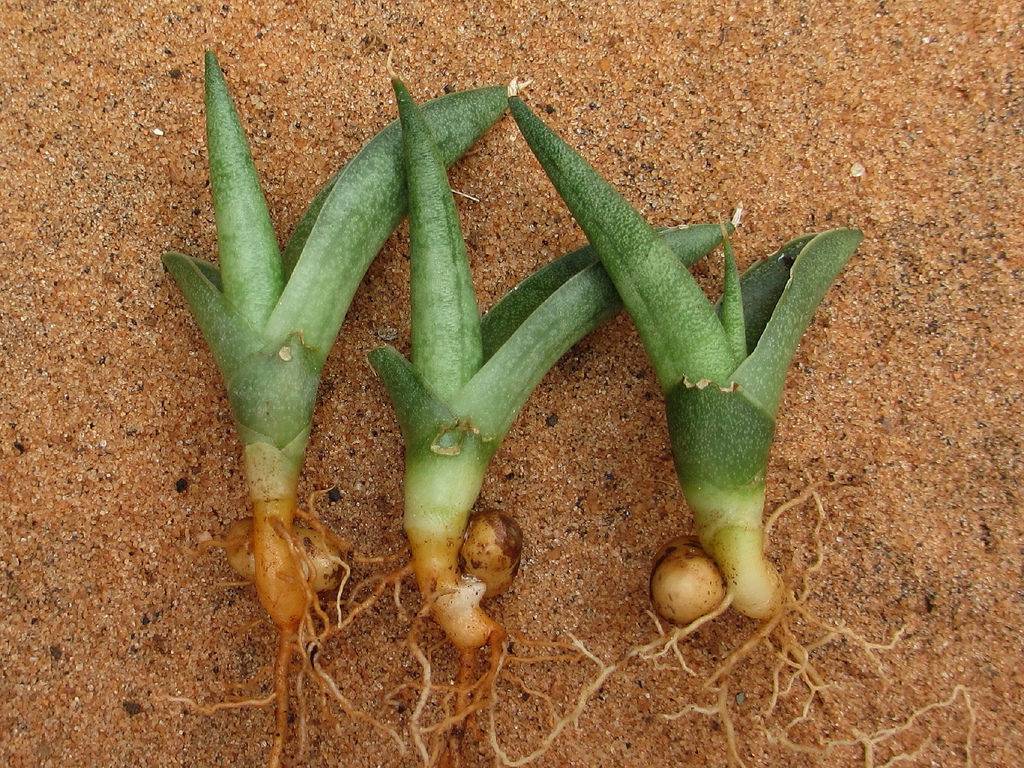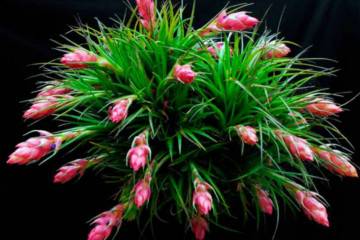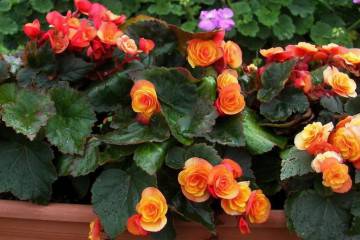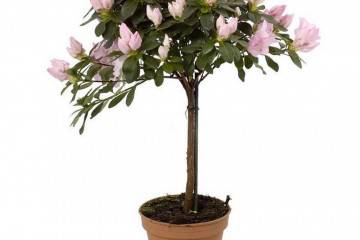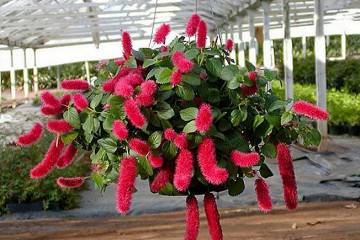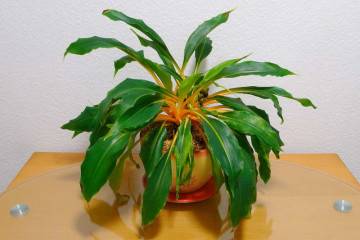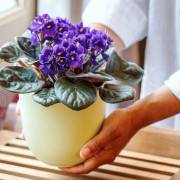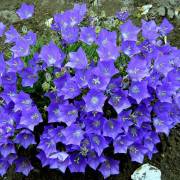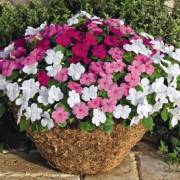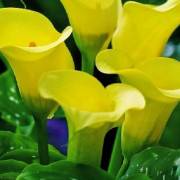"Pike tail" flower - care and reproduction
Content:
The sansevieria plant, or pike tail, has gained popularity due to its unpretentiousness and variety of varieties. Its distinctive feature is long and smooth leaves growing from the roots and capable of reaching 1 meter in height. The flower does not require serious care, but for its full bloom, you need to make some effort. Even a novice gardener can grow it, although a beginner should remember the standard breeding rules and features of the flower.
Appearance and family
Among gardeners, the flower is known as mother-in-law's tongue, sansevieria or sansevier, it is an evergreen perennial type, related to succulents. Its height depends on the variety; on average, the pike tail grows to 0.3-1.2 meters and can be both an epiphyte and a standard plant. Now more than 50 varieties of this plant are known, each of which has its own characteristic features.
The flower is distinguished by its characteristic long dark green leaves with white or yellow patterns along or across the leaf blades. The leaves are collected in rosettes, each of which contains up to three sheets. Sansevier is prone to slow growth, new leaves appear in rosettes at least a year later, while low-growing varieties grow several times faster.
History of appearance
The flower got its beautiful name - sansevieria - thanks to the Neapolitan prince, who lived in the 18th century and made a great contribution to the development of botany. The pike tail is a flower, the reproduction of which does not cause problems, has a rich history. Its homeland is Africa, but it also occurs naturally in Asia. Two centuries after the discovery of the plant, more than 60 varieties of it were bred, and the most famous varieties appeared only in 1939.
Flowering features
Growing this houseplant at home, novice gardeners do not immediately guess that it can bloom. Oddly enough, pike tail bloom is a defensive reaction to unfavorable conditions, for example, lack of water, low temperatures or lack of fertilizer.
In the process of flowering, sansevieria produces a long stem with small white flowers. To speed up this stage, it is enough to leave the plant without watering for 1-2 months. Such measures stimulate its defensive reaction, as a result of which it continues its race.
How to care for a plant at home
Caring for sansevieria does not cause problems, the plant is quite unpretentious and capable of growing even in adverse conditions. Pots with this flower look very impressive on windowsills, especially when combined with other plants. Nevertheless, for its stable growth and flowering, you need to follow a number of rules and study all the features of the pike tail in advance. This will avoid mistakes, especially when it comes to novice gardeners.
The plant has beneficial properties:
- Works as an air filter to purify indoor air.
- It contains saponins - substances used for medical purposes, as well as for the manufacture of medicines.
- It is used in folk medicine to stop blood, inflammation, cystitis, otitis media and other diseases.
- It is used in cosmetics, including shampoo and soap due to the good foaming properties of sansevieria.
Temperature
When caring for a pike tail flower at home, it must be remembered that the plant is able to withstand even high temperatures without watering, since it is a succulent. But it is worth making sure that it is not in too cold rooms, the optimum temperature for it in summer is not lower than +15 degrees, and in winter at least +10 degrees. These conditions are ideal for flowering.
Lighting
The flower can grow both on a windowsill in direct sunlight and in the darkest corners of the house. The best option for him would be high-intensity diffused lighting. In summer, the pots are best placed on open balconies facing north, west or east. If the plant is kept on the south side, an artificial shading area is created for it.
Watering
The flower should not be watered too often, it can get sick, especially if it stands in a room with a low air temperature. The usual moistening of the soil as it dries is enough for him, since in the natural environment the plant can do without water for a long time. In summer, it is watered at least 4-5 times a month, in winter once every 10-14 days.
For irrigation, warm, settled water is ideal; in the hot season, the leaves are sprayed or wiped once a week.
Spraying
The plant is not demanding for watering and spraying, but this procedure should be included in home care. It is important to ensure that during spraying, water does not get into the middle of the outlet, this can lead to leaf rot. The flower is sprayed according to a standard schedule with settled water using a spray bottle.
Humidity
The flower is not afraid of dry air, since it grows in arid conditions in its natural environment, therefore, it is necessary to care for it based on its natural characteristics. It will not be damaged by dry air, but it will be better to keep it in rooms with moderate humidity up to 50-60%.
Priming
The ideal soil for a pike tail consists of leaf and turf soil, as well as river sand, taken in equal proportions. The plant does not need a large pot, since it can easily grow even in a tight container, which must have high walls and drainage holes.
Roots need space, so a space up to 1-2 cm wide is allocated between the root system and the walls of the pot. The pot material can be absolutely anything.
Top dressing
Like any plant with beneficial properties, sansevier needs additional feeding. Once a month, the soil needs to be fed with special fertilizers for cacti and succulents. It is better to use half of the recommended dosages, since it will be easier for a flower to endure a lack of nutrients than an excess of them.
Breeding features
You can propagate a plant at home only using vegetative methods, the easiest way is to separate the lateral cuttings from the mother bush during the transplantation process. There is also another method of leaf propagation, which requires one or more lower healthy leaves. It is necessary to choose the appropriate method taking into account the experience of the gardener.
Rooting cuttings
For rooting with cuttings, you can take leaves removed during pruning.They are cut into pieces up to 5-10 cm long, placed in a glass of water and changed daily. After 2-3 weeks, the plant is transplanted into a pot after the roots appear. Also, this method can be used by rooting the sheets in containers with a moist substrate.
Transfer
You need to transplant the plant as the leaf rosettes grow. When the flower becomes too crowded, it is moved to a larger pot.
During the first two years, the pike tail must be replanted every spring, after which this procedure is carried out once every two years. For it, use the standard recommended soil, make a drainage layer and choose the widest pot.
Possible problems
The pike tail is resistant to diseases and pests, but it can be affected by root rot in case of excessive moisture. To get rid of the consequences, such a flower is transplanted into a pot with new soil, after cutting off the spoiled roots and treating them with ash.
If the leaves of the plant turn light green, it needs feeding. If there are soft and shriveled leaves, they are removed.
The plant is ideal for decorating any room in the home or office. Even a beginner can cope with it, because sansevieria is undemanding in the care process, it requires feeding and rare watering no more than 2-3 times a month. The flower is suitable for those who cannot devote much time to caring for home flowers.
